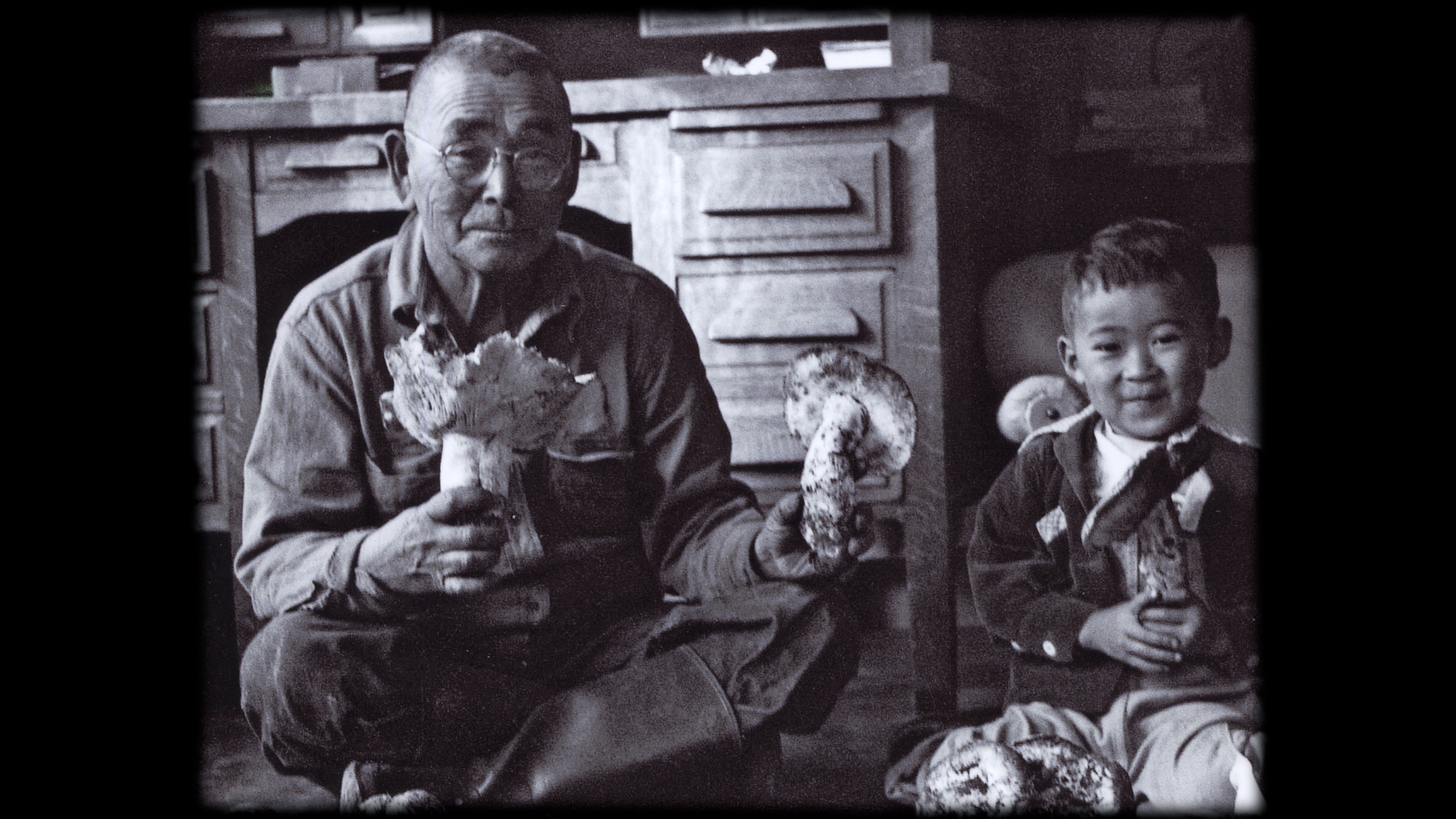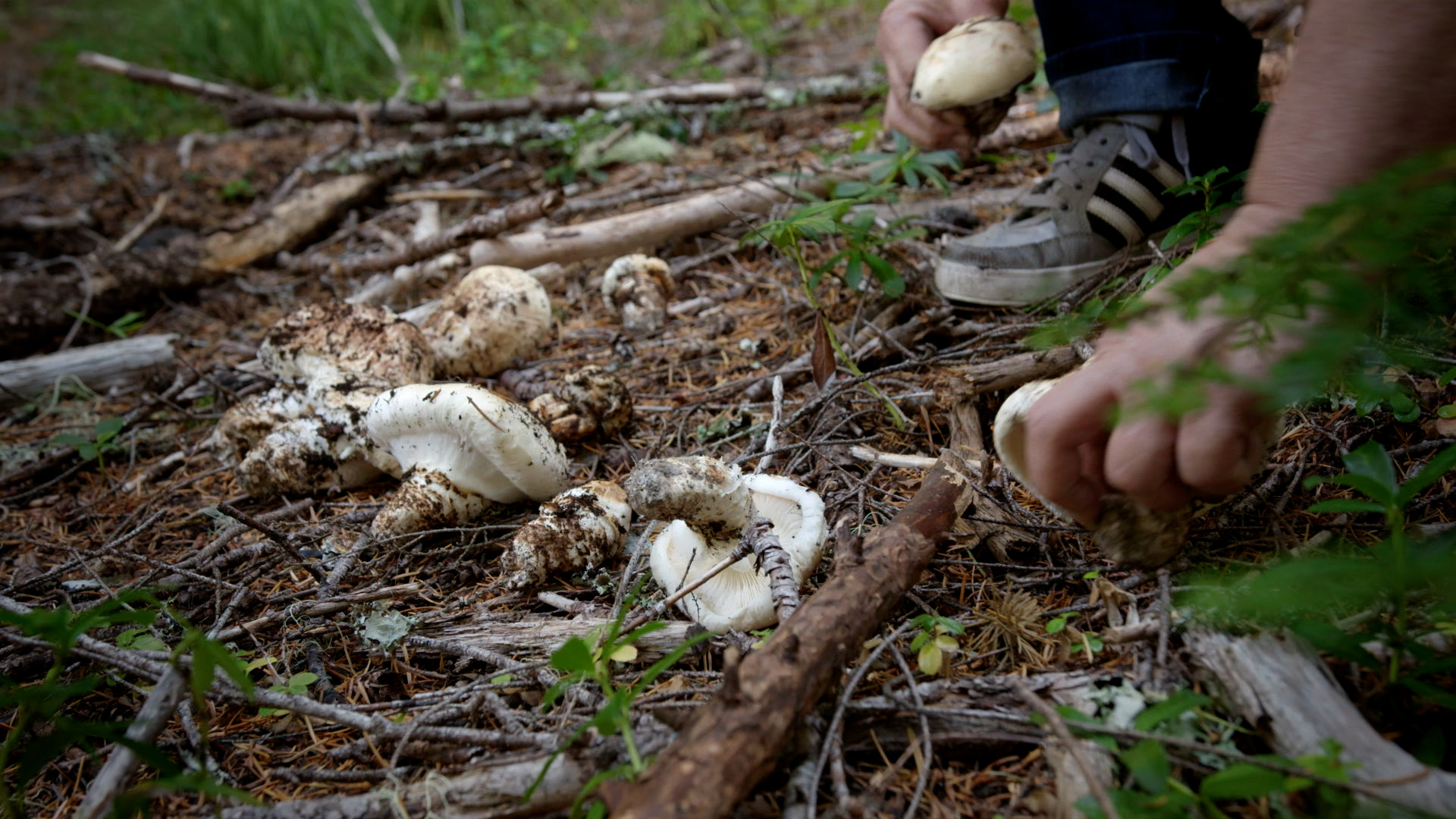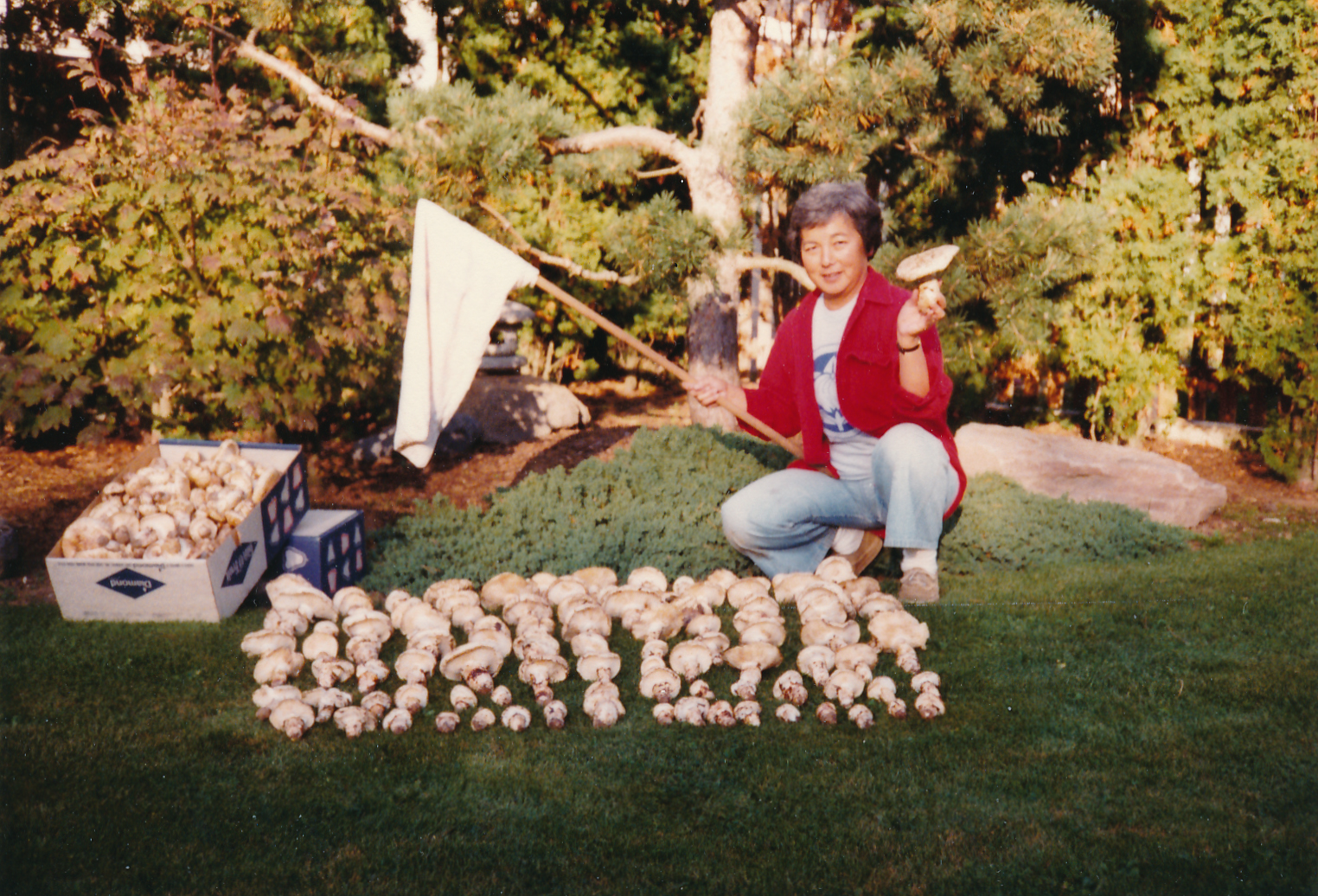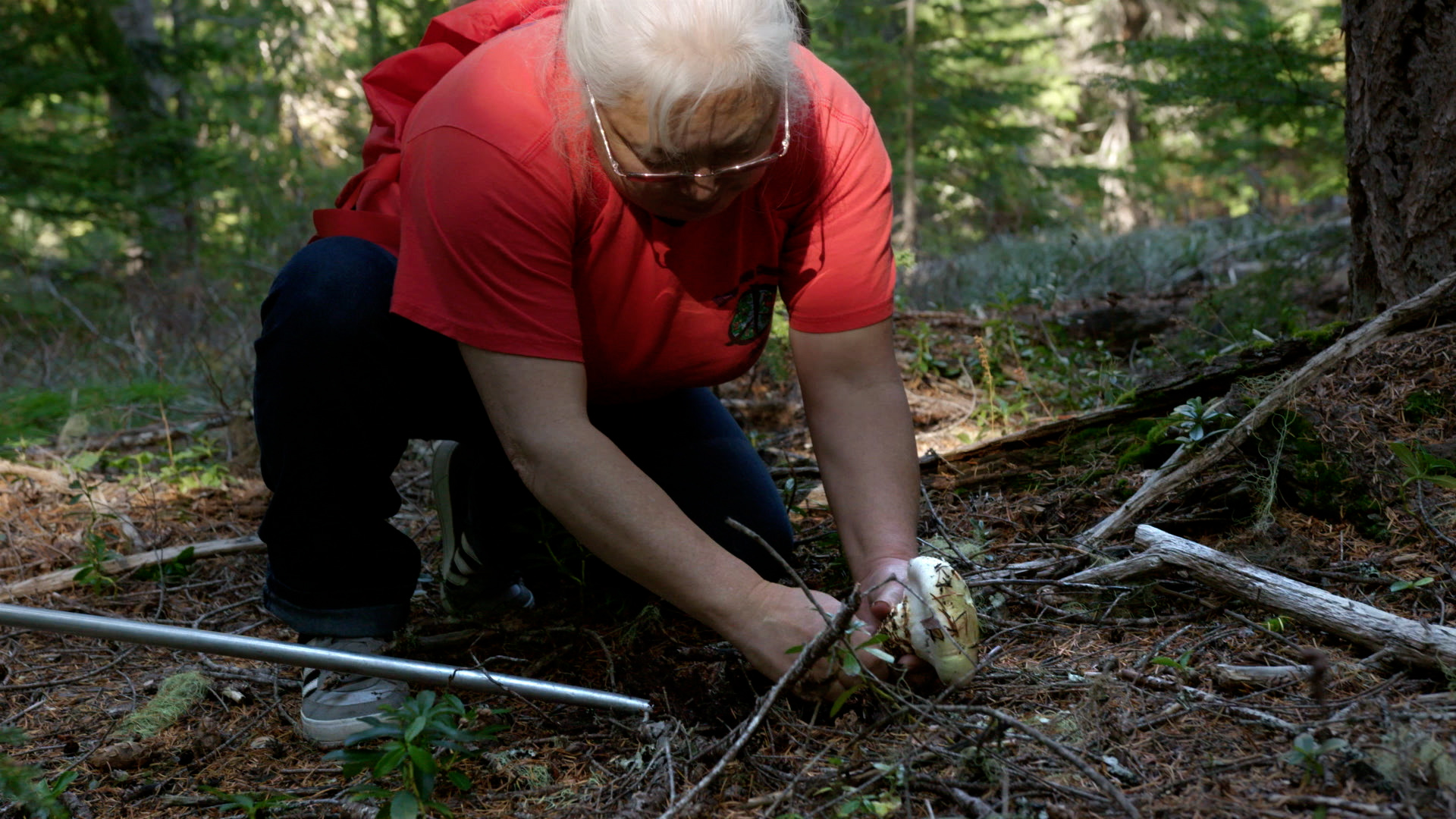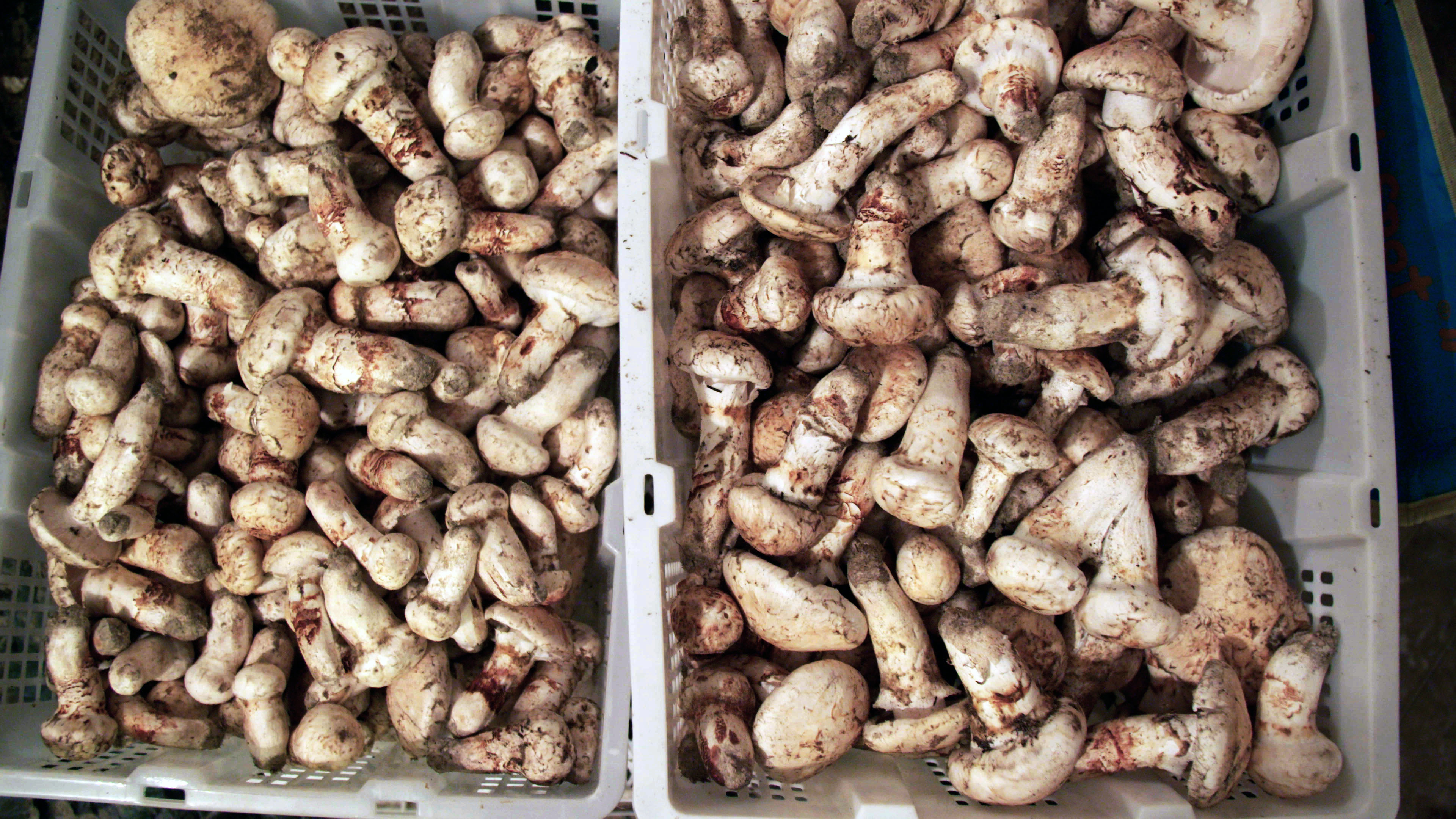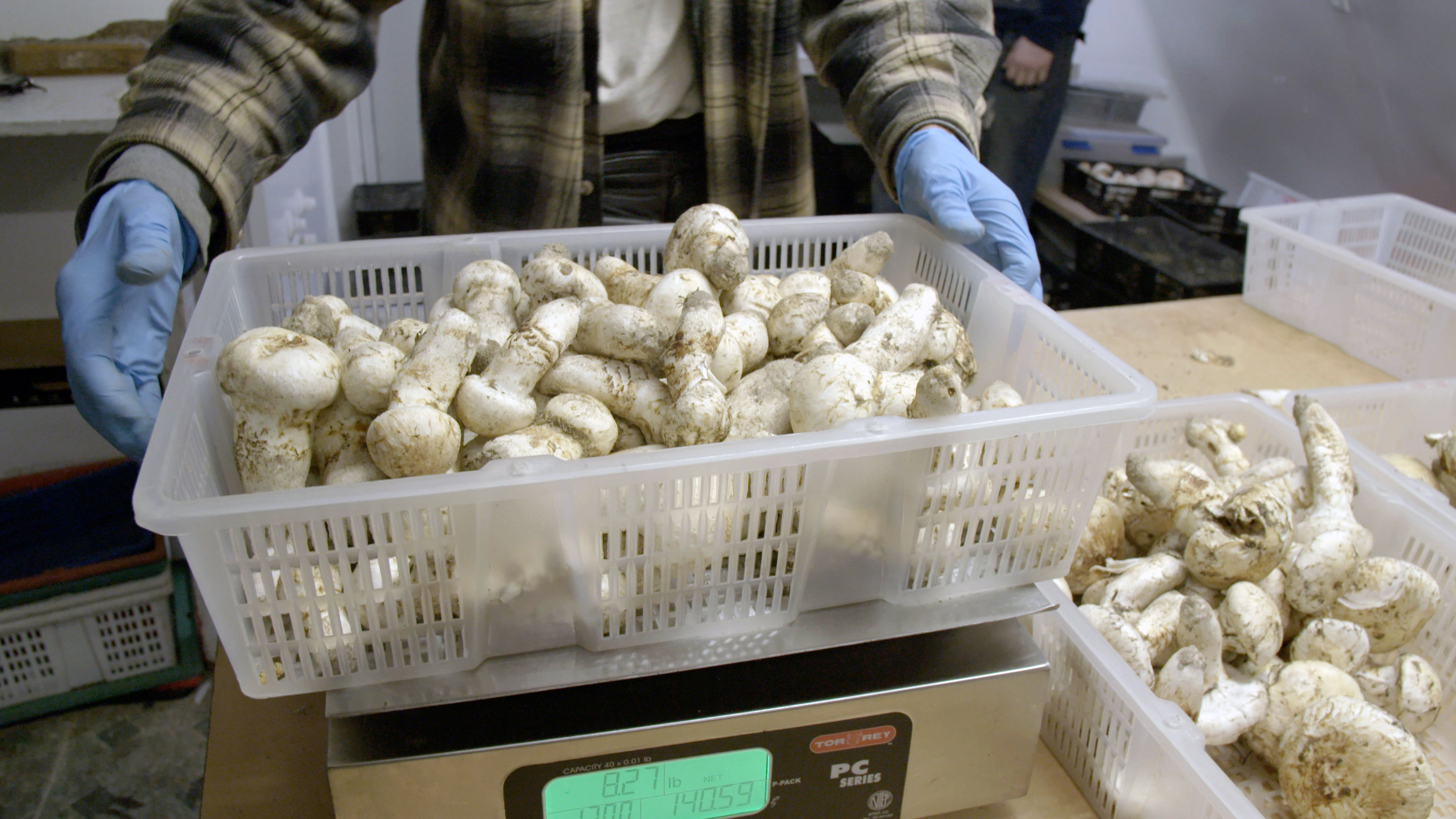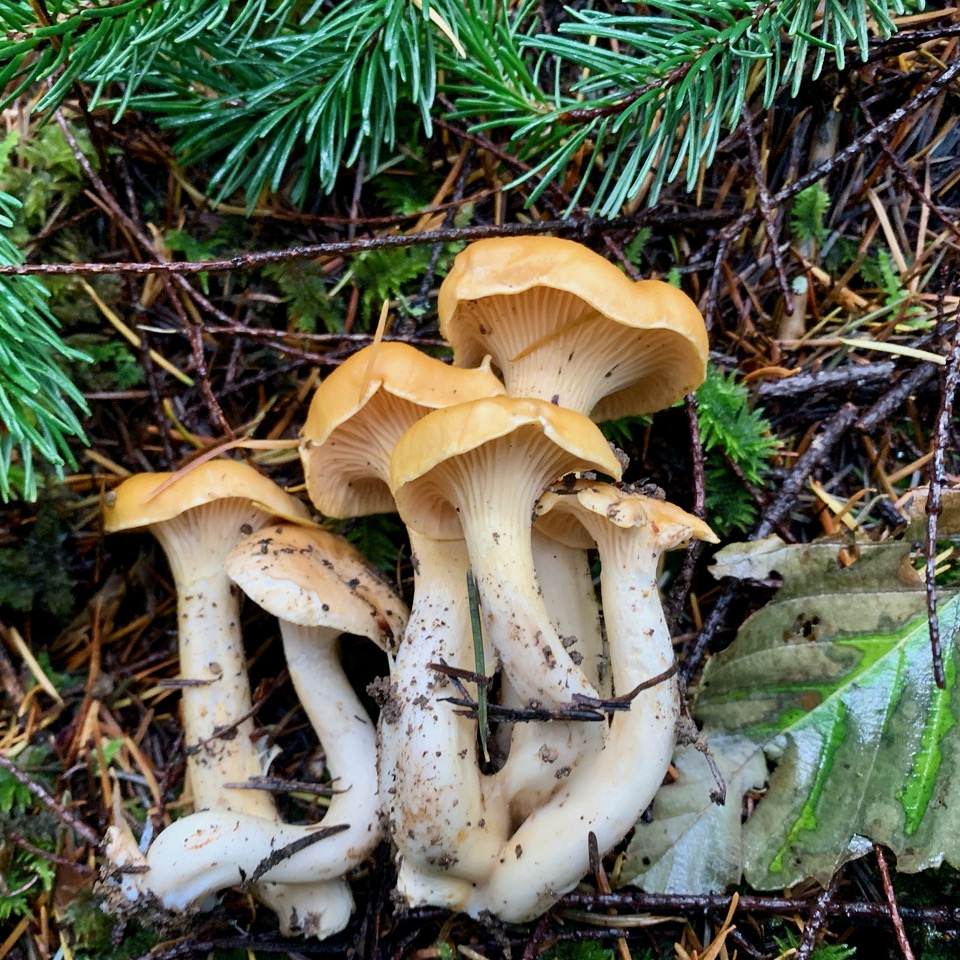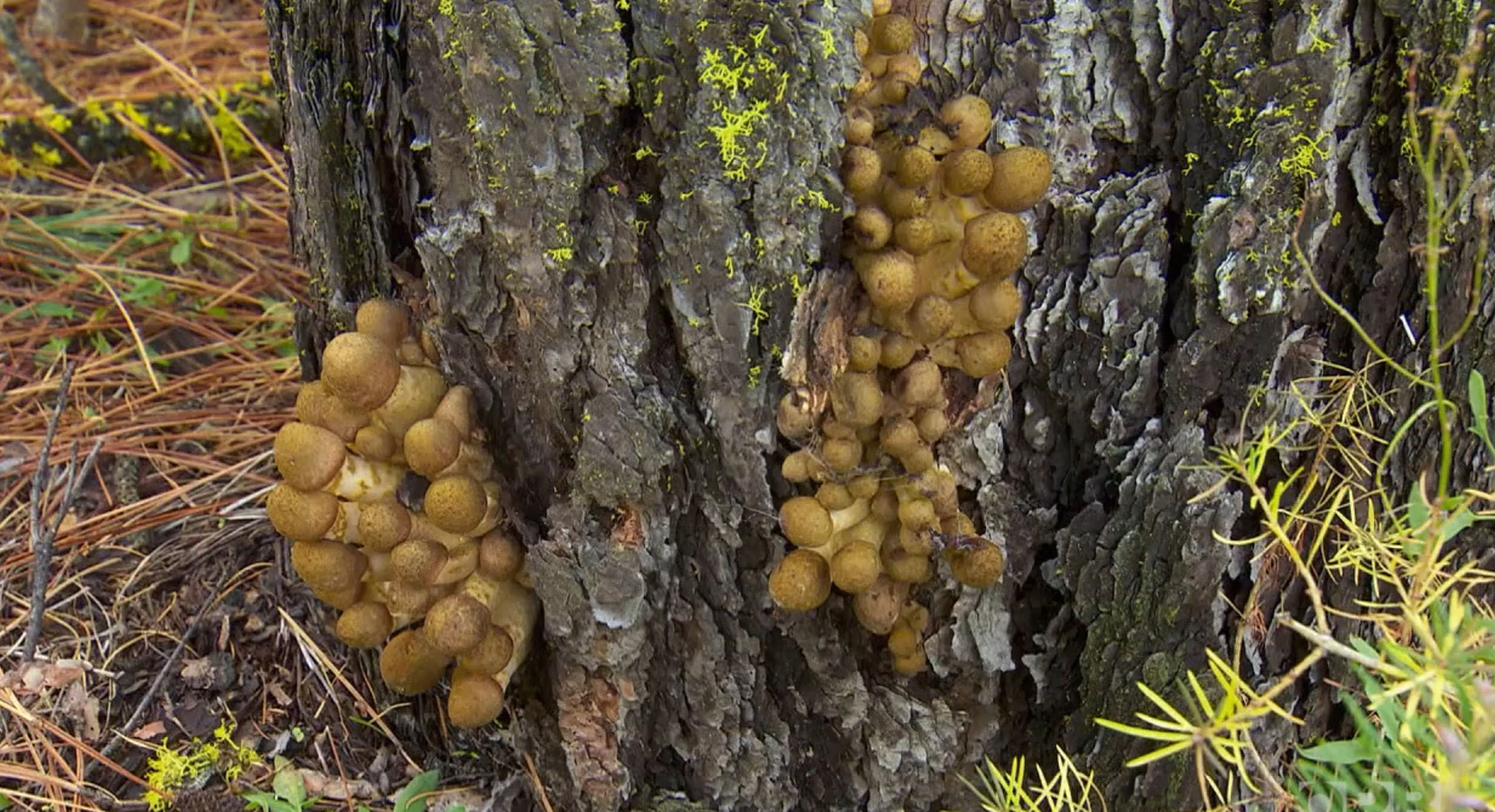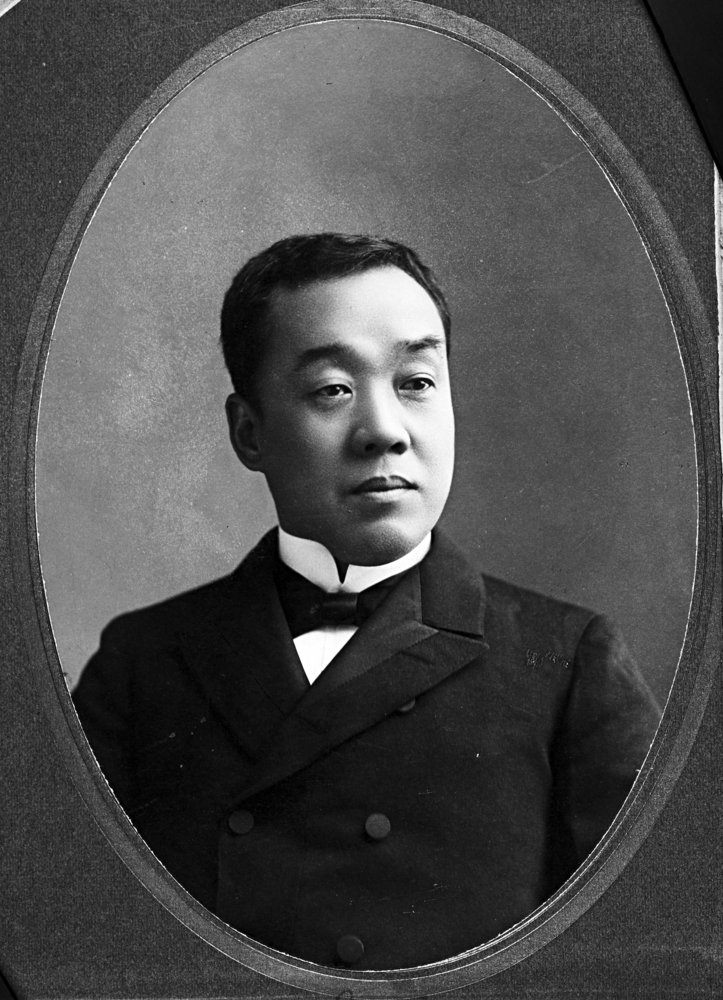On November 13, 1911, mycologist William Murrill collected a mushroom “in the sand hills among scrubby pines on the immediate coast at Newport, Oregon.” It was, he recorded, “a species remarkable for its size and habit of living in apparently pure sand.” He named it Armillaria arenicola, but it also would be referred to by other Latin names, including Armillaria ponderosa and Tricholoma magnivelare. In 2017, its binomial name was changed to Tricholoma murrillianum, in honor of Murrill’s specimen a century earlier. Most people know it by its Japanese name—matsutake (maat-suh-taa-kay).
In Japanese, matsutake means “pine mushroom,” a name used for both one matsutake and many. The common English names for the mushroom, including pine mushroom and tanoak mushroom, refer to the trees they grow under. In Oregon, matsutake live in symbiotic association with Douglas-firs, pines, tanoaks, and firs whose roots connect with matsutake mycelium to allow the species to exchange water and nutrients. To the uninitiated, matsutake may look like just another mushroom. Its cap and stem are creamy white with specks of rust, and a veil covers the gills when the mushroom is young and tears as it grows larger. Younger specimens, which are often hidden under duff (a layer of decaying matter on the forest floor), are discovered only when small bumps are noted on the surface.
A close relative of Pacific Northwestern matsutake grows in the pine forests in Japan, where people have picked matsutake for hundreds and possibly thousands of years. The flavor and aroma of the two species are practically identical and are often compared to cinnamon. One mushroom guide called it “a provocative compromise between 'red hots' and dirty socks.” Some call it the “autumn aroma.” Matsutake are “a thing whose most significant force is not tangible,” anthropologist Timothy Choy eloquently wrote, “but atmospheric, ephemeral, and hard to pin down. Not only are matsutake hard to find (as they are)...they are also hard to language and hard to smell.”
Pacific Northwestern matsutake is a traditional food of some Indigenous peoples in the Pacific Northwest. The Karuk people, whose aboriginal territory extends from present-day northwestern California along the Klamath River channel up to the border region of southwestern Oregon, call the mushroom xayviish. During the twentieth century, Elders passed on xayviish traditions, preserving practices that continue into the twenty-first century. Matsutake, or tanoak (“tan oak”) mushrooms, are also harvested by the neighboring Yurok and Hupa people in Northern California.
Matsutakegari—matsutake hunting—is a treasured fall activity, and immigrants who came to Oregon from Japan in the nineteenth and twentieth centuries brought the tradition with them. Despite research on matsutake in Japan since the 1920s, attempts to cultivate the mushroom have been unsuccessful. The only way to procure them is in the wild, and there are many locations in Oregon with exceptional matsutake patches. Several of those places have become famous in the Japanese American community, including Old Maid Flats on Mount Hood and the dunes near Florence. Traditionally, matsutake meals are shared in the fall, when quality mushrooms are given away as gifts. Classic dishes include matsutake sukiyaki and matsutakegohan (matsutake rice).
Local sales of Pacific Northwestern matsutake have existed since at least the early twentieth century. Mycologist C. H. Kauffman wrote in 1922: “I have collected at Hoodsport, Washington, what appears to be a rather common species in certain regions of Washington, common enough to be assiduously collected by the Japanese for commercial purposes.” But the market for Oregon matsutake remained small until the late 1970s, when Japan’s economy was on the rise but the supply of Japanese matsutake was in decline. When the prices for matsutake skyrocketed, several companies in the Pacific Northwest began to ship the mushrooms to Japan.
Circuit pickers, as they were called, began following the annual progression of mushroom fruitings from British Columbia to Northern California. Cambodian, Lao, Mien, and Hmong who had been displaced from their homes in Southeast Asia were drawn to the mushroom circuit because of the freedom and income it offered. In the 1990s, migrant workers from Central America became commercial pickers, and mushroom camps became multilingual forest communities. Locations on the mushroom circuit in Oregon include Little Odell Mushroom Camp near Crescent Lake, Mount Hood, Crater Lake, Cave Junction, Chemult, Diamond Lake, Coos Bay, and Brookings.
The price for matsutake soared in the 1990s, which led to what was called a “white gold rush.” While there was no evidence that “overpicking” was harmful, amateur mycological societies and recreational pickers worried that the large number of pickers would reduce harvests. In addition, a harvesting technique known as "raking," where rakes or shovels are used to uncover baby matsutake, was criticized as being ecologically damaging. In 1994, commercial pickers, ecologists, and mycologists collaborated on a study near Diamond Lake. Their results, published in 2006, showed that removing forest floor litter layers and not replacing them was “strongly detrimental to matsutake production.” The study also noted that “careful picking should generally not hinder subsequent fruiting.”
Matsutake gathering remains a part of the Oregon economy, and Oregonians can still be found searching the forests in the fall for the “autumn aroma.”
-
![]()
Eiji Suzuki with grandson Terry Tambara after a day of hunting matsutake.
Courtesy Terry Tambara family archive
-
![]()
Matsutake.
Courtesy Tristan Stoch
-
![]()
Miki Yasui with matsutake collected in Mt Hood National Forest.
Courtesy Yasui Family Collection
-
![]()
Amy Peterson picking matsutake.
Courtesy Tristan Stoch
-
![]()
Matsutake in baskets, ready to sell.
Courtesy Tristan Stoch
-
![]()
Matsutake at a buy station.
Courtesy Tristan Stoch
Related Entries
-
![Chanterelle Mushrooms]()
Chanterelle Mushrooms
Chanterelle mushroom refers to a group of mushrooms that usually have a…
-
![Humongous Fungus]()
Humongous Fungus
Oregon’s Malheur National Forest is the home of an occurrence of Armill…
-
![Japanese Americans in Oregon]()
Japanese Americans in Oregon
Immigrants from the West Resting in the shade of the Gresham Pioneer C…
Map This on the Oregon History WayFinder
The Oregon History Wayfinder is an interactive map that identifies significant places, people, and events in Oregon history.
Further Reading
Mushroom Seasons: Autumn Aroma. Trisan Stoch, director. 2021. Film.
Choy, Timothy. “Tending to Suspension: Abstraction and Apparatuses of Atmospheric Attunement in Matsutake Worlds.” Social Analysis: The International Journal of Anthropology 62.4 (2018): 54–77.
Diver, Sibyl. “Co-management as a Catalyst: Pathways to Post-colonial Forestry in the Klamath Basin, California.” Human Ecology 44 (2016).
Guin, Jerry. Matsutake Mushroom "White" Goldrush of the 1990s. Los Altos, Calif.: Naturegraph Publishers, 1997.
Hansis, Richard. “The harvesting of special forest products by Latinos and Southeast Asians in the Pacific Northwest: Preliminary observations.” Society & Natural Resources 9:6 (1996): 611-615.
Luoma, Daniel, et al. “Effects of mushroom harvest technique on subsequent American matsutake production.” Forest Ecology and Management 236.1 (2006): 65-75.
Richards, Rebecca T. "What the Natives Know: Wild Mushrooms and Forest Health." Journal of Forestry 95.9 (September 1997): 4-10.
Schlosser, William E., and Keith A. Blatner. “The Wild Edible Mushroom Industry of Washington, Oregon, and Idaho: A 1992 Survey.” Journal of Forestry 93.3 (February 1995): 31–36.
Trudell, Steven A., et al. “North American Matsutake: Names Clarified and a New Species Described.” Mycologia 109.3 (May 2017): 379–90.
Murrill, William A. “The Agaricaceae of the Pacific Coast—I.” Mycologia 4.4 (July 1912): 205–17.
Zeller, S. M., and K. Togashi. “The American and Japanese Matsu-Takes.” Mycologia 26.6 (November 1934): 544–58.



